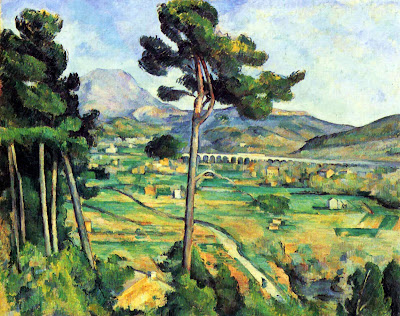Jacques-Louis David and Neoclassicism: the Past as Future
Jacques-Louis David (1748-1825) became the artistic interpreter of the revolutionary historical changes in France at the end of the 1700s. The style he created, Neoclassicism, responded to the ideological context of French society within the developments leading to, and under the impact of the Great Revolution of 1789. David reinvested the tradition of Classicism, and therefore modified also its aesthetics, in the sense of a new understanding of the context of art, and of the role of art and artists in the new times. In this sense, we can say that his works and ideas united both a retrospective and a prospective perspective on the history of European painting and on the place of the visual arts in society and the culture. He is at the same time the "last" of the Classicists and the first Modern artist.
That the future social-political reality of Europe had to appear first in the guise of its "ancient origins" was explained by Karl Marx as a kind of "law of historical representation as repetition". Before understanding the historical novelty as such of their deeds, the French bourgeoisie had to represent to itself their historical actions in the model of past myths, it had to universalize its motives and goals, before it could come to terms with its historical specificity. A process that will be the task of the next century, that is, the bourgeois post-revolutionary century, which will be also the century of new ideological and artistic revolutions, or anticipations of revolutions.
“Men make their own history, but they do not make it as they please; they do not make it under self-selected circumstances, but under circumstances existing already, given and transmitted from the past. The tradition of all dead generations weighs like a nightmare on the brains of the living. And just as they seem to be occupied with revolutionizing themselves and things, creating something that did not exist before, precisely in such epochs of revolutionary crisis they anxiously conjure up the spirits of the past to their service, borrowing from them names, battle slogans, and costumes in order to present this new scene in world history in time-honored disguise and borrowed language. Thus Luther put on the mask of the Apostle Paul, the Revolution of 1789-1814 draped itself alternately in the guise of the Roman Republic and theRoman Empire, and the Revolution of 1848 knew nothing better to do than to parody, now 1789, now the revolutionary tradition of 1793-95. In like manner, the beginner who has learned a new language always translates it back into his mother tongue, but he assimilates the spirit of the new language and expresses himself freely in it only when he moves in it without recalling the old and when he forgets his native tongue.”
Karl Marx, The Eighteenth Brumaire of Louis Bonaparte, 1852
Karl Marx, The Eighteenth Brumaire of Louis Bonaparte, 1852
Coming to terms with the specificity of its changed situation will be also the task assigned to the arts in the 19th century. In the early part of the 19th century, Neoclassicism transformed itself into a conservative style in the hands, for instance, of Ingres, a disciple of David. The 19th century is the time of the "final" crisis and demise of the Classicist or Renaissance Paradigm, that is, of the long tradition of the concept and practice of art as mimesis. In this process art will lose its grounding on "Nature". It will find itself with new foundations established, from now on, on the soil of History: a dynamic, shifting and unstable ground.
We can state that David is, in many aspects, the pioneer of this epochal shift of territory, and that the historical destiny of the art he created is one example, among others, of the new challenges, the risks and perils of art forms in the new times. From the "transcendental" domain of real, that is, of ideal forms, art descends into the arena of history. Its vicissitudes from now on will be those that affect all the products of Time, and the first condition of what exists in Time is, indeed, mortality.
Marcelo Guimaraes Lima
Portrait of the Artist
1794
Oil on canvas, 81 x 64 cm
Musée du Louvre, Paris
1794
Oil on canvas, 81 x 64 cm
Musée du Louvre, Paris
The Combat of Mars and Minerva
1771
Oil on canvas, 146 x 181 cm
Musée du Louvre, Paris
1771
Oil on canvas, 146 x 181 cm
Musée du Louvre, Paris
Portrait of Marie-Francoise Buron
c. 1769
Oil on canvas, 66 x 54 cm
Musée National des Beaux-Arts, Algiers
c. 1769
Oil on canvas, 66 x 54 cm
Musée National des Beaux-Arts, Algiers
Count Potocki
1781
Oil on canvas, 304 x 218 cm
Muzeum Narodowe, Warsaw
1781
Oil on canvas, 304 x 218 cm
Muzeum Narodowe, Warsaw
The Oath of the Horatii
1784
Oil on canvas, 330 x 425 cm
Musée du Louvre, Paris
The Death of Socrates
1787
Oil on canvas, 130 x 196 cm
Metropolitan Museum of Art, New York
The Lictors Returning to Brutus the Bodies of his Sons
1789
Oil on canvas, 323 x 422 cm
Musée du Louvre, Paris
Death of Marat, 1793
View of the Luxembourg Garden, 1794
Napoleon in his Study
1812
Oil on canvas, 204 x 125 cm
National Gallery of Art, Washington
1812
Oil on canvas, 204 x 125 cm
National Gallery of Art, Washington
Napoleon at the St. Bernard Pass
1801
Oil on canvas, 246 x 231 cm
Kunsthistorisches Museum, Vienna
Mars Disarmed by Venus and the Three Graces
1824
Oil on canvas, 308 x 262 cm
Musées Royaux des Beaux-Arts, Brussels














Comments